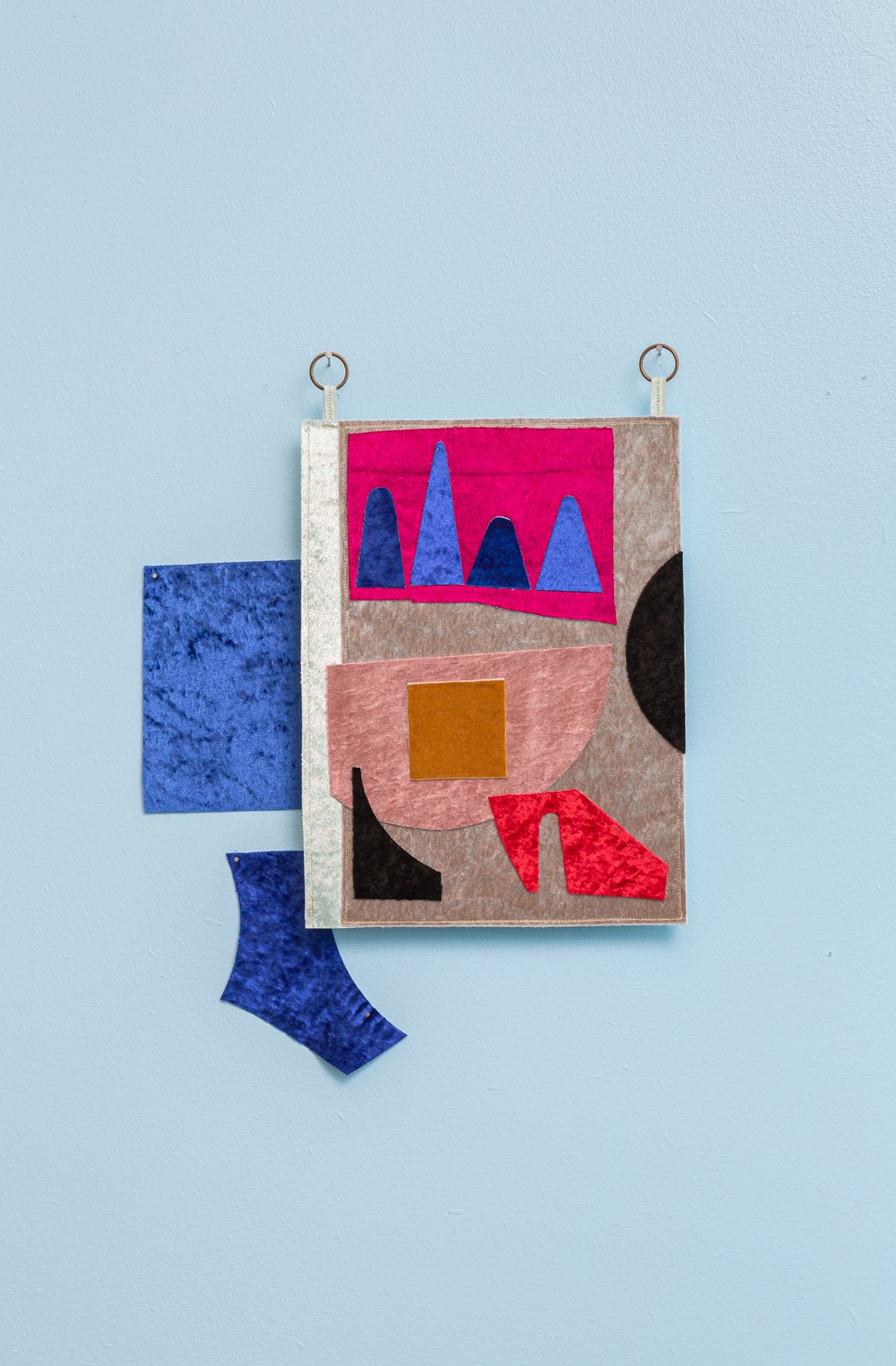STUDIO CREEP 2021
Paula do Prado, Ali Noble, Brigitte Summers, Remi Siciliano.
Backspace Gallery, SCA, Sydney University .
Photography by Document.
An essay in response to STUDIO CREEP.
I met the four artists featured in the group exhibition STUDIO CREEP last year, between lockdowns. We were taking a unit called Art as Research. We shared an ambivalence for rubrics, and of being forced to organise our thoughts, and our art practices, to them. I still have my notes from those sessions. We were given texts to read on practice-led research (mostly), ways to draw on models to make a point, and an example thesis that seemed to advocate for a rigorous use of grids. At the same time, I was participating in an online workshop called Practice Conversations led by poet and artist Caroline Bergvall. These two groups in sustained discussion informed my thinking around alternative ways to approach an arts practice, ways that centre on conversation with others, in the sense of its Latin, con ‘with + vertere ‘to turn’.
Bergvall shared images from medieval and early Renaissance manuscripts in the lead up to her workshop. They were to illustrate and illuminate processes of speaking and working together. Of simultaneous group writing and making which is collaborative and/or translocal. Bergvall was putting together a workshop series designed to develop and grow work through creative research with a focus on sharing ideas and gathering thoughts. The text accompanying these early images read ‘working together to grow’ and ‘digging together to lift and grow’.
I’m listening in on, or remembering, a conversation; it progresses to a threshold of change. Small prepositions promise to mirror themselves. In an attempt to sound out what I see, new word-forms arrive: ‘ot-to[h] nur-tend’. The promise of a new language, perhaps, arrives.
Once again, I move into a techne of chance operations, though that doesn’t mean an absence of intention or design. In fact, the wider space here in this conversation is designated to give room to the group, to allow its groupness.There is a partaking of infections and inflections. True conversation asks for an allowance of chance operations.
Time, here, is approximate as I remember meeting these artists in recurring points of contact, a trail of forms: womxn matter, film, angles of light and shielding shadows, alluring fabric, joyous velveteen and interrupting velocities. Moving around artworks together at exhibition openings, catching a bus. Typesetting. Rosemary, as part of the making. There was a photograph of a bandicoot without the bandicoot, though a dirtscape remained in reference to it. There was a failed collaboration with a fox, a failed collaboration with a bat but that was nothing anyone else recognises. I suppose it to be an infection of imagination. Beginning at the middle, untying and teasing. By the same token, knotting and unknotting.
Thus, a backspace. Not in order to delete, but to perform an iterative turn after some exchange, with a difference that is quite imperceptible, since intellectual effort is invisible. Or, maybe, a backspace in direct response to a turn in thought, some re/connaissance. This feels like an edge. Let’s say, in conversation, one artist’s work or practice meets that of another, or others, at an edge.
To move around the gallery space is to move through the extents of interaction between the works in conversation. On one wall, Remi Siciliano’s image in collaboration with fungus, a 35mm negative that’s been scanned and enlarged, calls over to Brigitta Summers’ framed poster prints, ‘to turn to soil.’ Paula do Prado’s gathered and woven forms made of remembrance attends to Summers’ prints of hands playing cat’s cradle with string which, in turn, speaks to Ali Noble’s theatrical forms of leisure and the pleasure of play. To describe this convergence of artists, then, is to say they meet each other at their edges. This is a theory of circles and lines. A geometry of presence.
STUDIO CREEP, to me, is a positive process whereby artists are in conversation about their arts practice; STUDIO CREEP can satisfy a desire for immediacy and presence; STUDIO CREEP can take account of what we owe each other.
McElhone 2022







